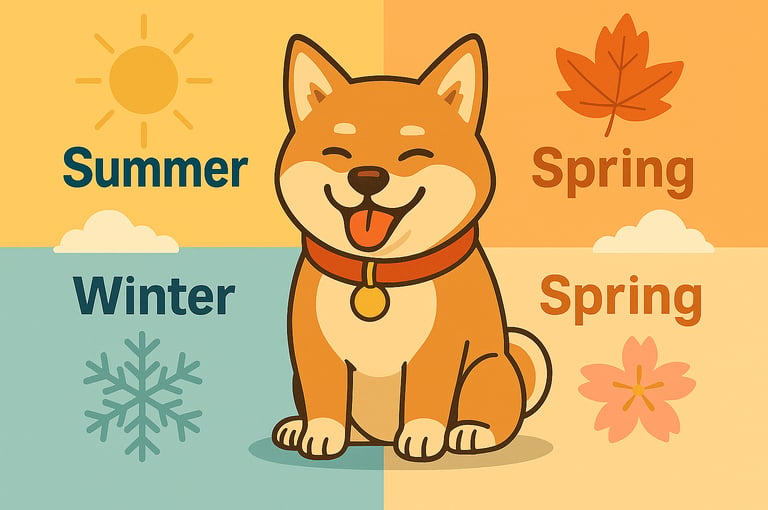Discover how to care for your pet in Japan’s varying climate: practical tips to keep your dog safe and comfortable throughout the year’s seasons.
Learn how to protect your pet in Japan throughout the year. Get practical tips for summer, winter, autumn, and spring to keep your dog safe from seasonal climate risks.
TIPS AND CARE
5/22/20251 min read


Introduction
The climate in Japan varies drastically across the seasons. Hot, humid summers, cold, dry winters, and seasonal rains can directly affect your pet’s health and well-being. In this article, you’ll learn how to care for your dog throughout the year, ensuring comfort and safety.
☀️ Summer: Intense Heat and High Humidity
Main risks:
Heatstroke and hyperthermia
Paw burns from hot asphalt
Dehydration
Recommended care:
Avoid walks between 10 a.m. and 5 p.m.
Keep your dog hydrated and provide fresh water at all times
Use cooling mats and pet-specific fans
Never leave your dog in the car, even for a few minutes
🐶 Tip: A hygienic trim helps with thermal comfort, but don’t shave the fur completely — it also protects against heat.
❄️ Winter: Cold, Wind, and Dryness
Main risks:
Hypothermia in small or short-haired breeds
Dry skin and paw pads
Increased use of heaters (risk of burns)
Recommended care:
Dress your dog in appropriate winter clothing
Moisturize paws with pet-safe creams
Avoid baths with cold water
Keep a safe distance from heaters
🔥 Some dogs love lying near heaters — use a barrier or supervise constantly.
🍂 Autumn: Transition and Allergies
Main risks:
Sudden temperature drops
Allergies from dust mites and fallen leaves
Fleas and ticks still active
Recommended care:
Gradually adjust routine and clothing
Vacuum the environment frequently
Continue parasite prevention
🐾 Walks are ideal in autumn, but avoid areas with heavy leaf accumulation.
🌷 Spring: Pollen and Shedding
Main risks:
Allergy flare-ups (especially in sensitive pets)
Excess hair in the environment
Fleas and ticks reappearing
Recommended care:
Brush your pet daily (especially long-haired breeds)
Clean the environment with a damp cloth to reduce pollen
Watch for signs of itching, sneezing, or redness
💡 Spring is the season with the most behavioral changes due to rising temperatures. Observe any changes in appetite or energy levels.
✅ Conclusion
Japan has well-defined seasons, which require extra attention from pet owners throughout the year. Each season brings specific challenges, but with small routine adaptations and simple care measures, your dog can enjoy better health and well-being.
Always keep a trusted veterinarian nearby and update preventive measures according to the season.
